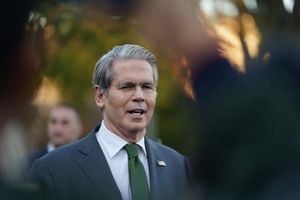On a muggy morning in early December 2024, the steps outside the U.S. Department of Education filled with the chants of student loan borrowers. Waving signs and urging action, protesters called for the elimination of crushing debts, especially for those defrauded by predatory for-profit colleges. Their voices echoed a growing national frustration—one that Congress and the White House have moved to address, albeit in a way that’s sparked both hope and controversy.
Fast forward to July 2025: Congress passed President Trump’s highly publicized “One Big Beautiful Bill,” a sweeping piece of legislation aimed at overhauling the federal student loan system. While the bill’s title drew headlines, it was the details buried within that may reshape the future of higher education finance for millions of Americans.
According to reporting by The Hill and analysis from the American Enterprise Institute, the new law introduces the Repayment Assistance Plan, a dramatic shift from previous approaches. Under this plan, borrowers’ monthly payments are tied to their income, and crucially, any unpaid interest is waived as long as payments are made on time. The goal? Ensure that principal balances always decrease—never rise—so debtors aren’t stuck in a cycle of mounting balances.
“The legislation instead creates a new way for borrowers to repay their loans known as the Repayment Assistance Plan,” wrote Preston Cooper, a senior fellow at the American Enterprise Institute. “As long as borrowers make their payments on time, any unpaid interest not covered by the monthly payment is waived.” This means that, unlike previous repayment plans where balances could balloon due to unpaid interest, borrowers now see their debt shrink with every payment.
To put this into perspective, a borrower earning just under $30,000 per year and facing $100 in monthly accrued interest might only pay $50 a month. Under the new plan, the remaining $50 in interest is waived, and another $50 is credited toward the principal. Under the old system, that borrower’s debt would have grown each month; now, it shrinks.
But the bill goes further. It caps federal student loans at $20,000 per year for parents, $20,500 for most graduate students, and $50,000 for medical and other professional students. The law also bars colleges from tapping federal loans for degree programs where graduates earn less than a comparable high school or bachelor’s degree holder. This is a direct response to cases like Columbia University’s film master’s program, which left students with a median debt of $180,000—often outstripping their post-graduation earnings.
“These reforms will keep student debt to manageable levels and ensure that the worst-performing programs cannot rely on federal loans at all,” Cooper explained in The Hill. The idea is clear: tie federal lending to programs with proven economic value and protect both students and taxpayers from runaway debt.
While the reforms are sweeping, they’re not without critics. According to reporting from Forbes and statements from the Student Borrower Protection Center, the new law and accompanying Republican proposals could make college less accessible for some. The GOP’s latest budget proposal, released on September 1, 2025, calls for an additional $12 billion cut to Department of Education funding—a 15% reduction from $79 billion to $67 billion. These cuts, if enacted, would come as the department is already struggling with massive backlogs: 1.3 million applications are pending for income-driven repayment plans, and 72,000 for the PSLF Buyback program, which helps public service workers move toward student loan forgiveness.
“This bill supports President Trump’s efforts to safeguard taxpayer dollars, eliminate out-of-touch progressive policies, and end the weaponization of government by eliminating or reducing more than 100 programs,” said House Appropriations Committee Chairman Tom Cole, as cited by Forbes.
But critics warn that these cuts could worsen existing problems. The Trump administration’s earlier layoffs and staff buyouts at the Department of Education have already contributed to growing backlogs for borrowers seeking help. With millions of borrowers expected to switch repayment plans under the new law, those delays could become even more severe.
There’s also concern about access to aid. While Pell Grant funding is preserved, the proposed appropriations bill would eliminate the Federal Supplemental Educational Opportunity Grant (which provided nearly $1 billion in aid last year to high-need students) and slash Federal Work-Study funding by 36%. The Graduate PLUS loan program will be eliminated entirely by July 1, 2026, and Parent PLUS loans will be capped. As a result, graduate student borrowing will be limited to $20,500 per year (with a $100,000 lifetime cap), and professional student borrowing to $50,000 per year (with a $200,000 lifetime cap).
Advocates, including the Student Borrower Protection Center, argue that these changes could push families toward riskier private student loans or even out of higher education altogether. “The Senate bill makes $300 billion in cuts to higher education and guts critical protections,” the group said in July, warning that families might be “pushed into predatory private debt or out of higher education entirely.”
Community colleges, which serve a broad swath of American students, have been closely following these developments. The American Association of Community Colleges (AACC) filed public comments in late August 2025, outlining priorities for implementing the education components of the One Big Beautiful Bill. According to Community College Daily, AACC has pushed for separate representation for community colleges in the Department of Education’s upcoming negotiated-rulemaking process, arguing that their needs differ from four-year institutions.
The Education Department has proposed two negotiating committees: the Reimagining and Improving Student Education (RISE) Committee, which will address changes to student loan policies and repayment terms, and the Accountability in Higher Education and Access through Demand-driven Workforce Pell (AHEAD) Committee, which will implement the new Workforce Pell program and related accountability systems. The RISE Committee is set to meet in late September and early November, while the AHEAD Committee will convene in December and January.
AACC’s priorities include maximizing efficiency and clarity in new reporting requirements, particularly as the new Workforce Pell and gainful employment regulations require programs to meet a 70% completion and placement rate standard. The association also supports limiting gainful employment sanctions to loan programs only, following Congressional direction.
As the dust settles, one thing is clear: the landscape for student borrowers is changing rapidly. The One Big Beautiful Bill aims to fix long-standing issues with runaway debt and unaccountable lending, but it comes with new hurdles and uncertainties. For students, families, and institutions, the months ahead will be a test of adaptability—and for many, a test of endurance.
For now, the debate continues, and the stakes couldn’t be higher. As new rules are hammered out and funding battles play out in Congress, millions of borrowers and future students watch and wait, hoping that the promise of affordable, accessible education remains within reach.



